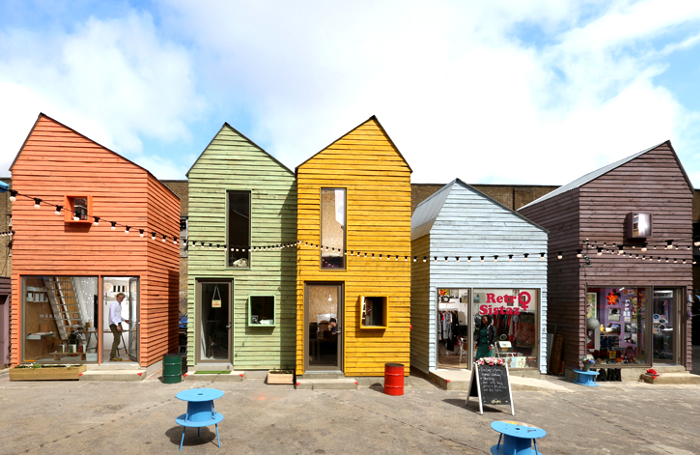Working on a community based project offers very different challenges and rewards to delivering for a private client. Many local authorities are currently engaged in regeneration schemes that must of course focus on the needs of the community. These projects demand ingenuity, empathy, and imagination: attributes architects routinely call upon in creating successful new spaces.
Jan Kattein Architects (JKA) has built up an impressive portfolio of high street improvement and regeneration projects. They thrive in collaborating with other designers, artists, and makers – and not least the community stakeholders themselves.
Much of JKA’s work begins with a local authority that wishes to invest in a community scheme, without necessarily having a specific idea of how. JKA recently won a competitive tender for a £400,000 community legacy project in Thamesmead that had no predetermined outcomes.
"We don’t draw anything until we’ve talked to people on the street, listened to people, and asked what their stake is in the area," Kattein explains. "Then we will come back with suggestions on what they can have."
"It is a different approach from calling people together and simply asking 'What do you want?', which used to happen a lot in community architecture in the past."
Placemaking and community based projects currently play a large part in the Greater London Authority (GLA) agenda. Its regeneration team is administering the Good Growth Fund, which awarded £20million in its second round in 2018.
JKA has helped some London boroughs draw up successful bids for this money. It has even found itself tendering for council-led projects underwritten by this very funding.
The award-winning Blue House Yard in Wood Green was one of three such projects in Haringey. JKA, aided by Meanwhile Space CIC, won a contract to deliver and operate a project putting a shuttered former council building and its car park site back into use. The scheme has a projected five year lifespan, pending a final decision on a Crossrail station location.
The simple expedient of painting the building a striking blue immediately transformed the empty council offices into a local landmark. JKA drew up a scheme for nine two-storey micro shed workspaces, studios in the former council building, a new public space, and a café in a double-decker bus.
JKA had to become a contractor of sorts to make the project happen, employing local apprentices and carpenters to build the low-tech sheds, assisted by volunteers and future tenants.

To bring this kind of project to fruition, Kattein believes that an architect needs to adopt three roles: the inventor who comes up with novel ideas, the arbitrator who engages with people and gets them excited about a project, and the activist who rolls up their sleeves and makes things happen – as a maker too, if needs be.
Another crucial activity that the architect needs to engage in is, of course, winning such work in the first place.
"The vast majority of our public sector work is won via competitions which are scored on a quality/price basis," Kattein reveals. "I spend a lot of my time writing tender responses and project proposals. Sometimes we partner with other organisations to win complex, multi-disciplinary projects."
Establishing a reputation for delivery of community based schemes undoubtedly gives their applications weight, although it is far from a guarantee.
"We often embark on highly unusual and innovative projects and it is true that new clients sometimes hear about our approach: one thing does lead to another. But we still have to tender competitively for each new project, sometimes we even tender for architectural services from one RIBA stage to the next."
Jan Kattein will be talking about his approach to collaboration on community regeneration projects at Smart Practice: New Ways of Working, the RIBA conference on forward thinking in practice on 1 October 2019.
Thanks to Jan Kattein, founding director, Jan Kattein Architects.
Text by Neal Morris. This is a Professional Feature edited by the RIBA Practice team. Send us your feedback and ideas
RIBA Core Curriculum Topic: Architecture for social purpose.
As part of the flexible RIBA CPD programme, Professional Features count as microlearning. See further information on the updated RIBA CPD Core Curriculum and on fulfilling your CPD requirements as an RIBA Chartered Member.
Posted on 11 July 2019.









